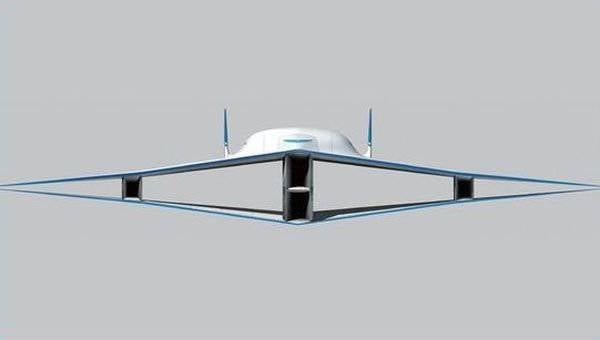To overcome the sound barrier in the air can return biplanes
The Concorde supersonic passenger aircraft, although it ended its work in 2003 not because of noise, was not very widespread primarily because the wild sounds that the aircraft made when it overcame the sound barrier did not allow it to receive permission periodic flights over land. From the territory of the Anglo-American airports, the take-off and dispersal of the aircraft passed over the water, so the transatlantic flight remained its only fate for many years.

But even if in the future aircraft will be better designed, the problem of overcoming the sound barrier will not lose its relevance anyway. This is due not only to the fact that citizens who are on the ground will always be unhappy. The thing is that when the aircraft overcomes the sound barrier, a shock wave is formed on the leading edge of its wing. At the same time, at the leading edge, the boundary layer of air retains subsonic speed, and the transition of excess kinetic energy of the flow into the internal energy of the gas occurs. As a result, a sharp increase in pressure and temperature of the boundary layer, leading to an abrupt increase in resistance. In other words, the sound effects of the aircraft on the ground require high fuel consumption, which is considered another weak point of the "Concorde" and the Tu-144.
But not everything is so running! The biplane, which today is only perceived as an archaic maize, can return to Aviation and correct the situation. Back in the 50s of the 20th century, Adolf Busemann proposed to solve the problem of overcoming the sound barrier with the help of a double wing, in which the shock waves generated from the lower and upper wings are superimposed on each other and mutually quenched. The boundary layer is characterized by temperature and lower pressure, which affects the increase in the efficiency of the aircraft.
Then, in 1950-x, the problem arose when creating a wing of a very thin profile, otherwise the resistance would be very large, so that the plane could fly with moderate fuel consumption.
In addition, in carrying out work on Mach, which was laid in such a wing during design, everything will go perfectly. But if the speed changes slightly, the wing begins to falter, and in fact, before the implementation of a cruising flight, the aircraft must still take off and accelerate. The most difficult moment was that there was a small gap between the pairs of wings, and a large volume of air, passing through it while overcoming the sound barrier, fell to a level that could not ensure the preservation of sufficient lifting force. It turned out that the wing "choked"!
After the dissertation work of Rui Hu, an employee of Stanford University, appeared in 2009, it became clear that this issue was solved by optimizing the aerodynamic profile of the Buseman biplane. However, only recently carried out computer modeling of such profiles by researchers Ru Hu and Qi Qi Wan showed exactly what shape wings should have in order for this to be practiced.
Scientists have noticed that to create sufficient lift force on Busemann’s wings on subsonic and transzvuke, the inner surfaces of the wing should be made extremely smooth and the front edge should be made so that it protrudes slightly down for the lower pair and up for the upper pair. This leads to the suction of large air currents onto the bearing surfaces by the wings. Wings gain lift and drag characteristic of conventional wings flying at non-cruising speeds. Resistance at cruising speed dropped by half.
It must be said that this is something more than a revolution. Reducing the resistance by half compared to the "Concorde" means that while maintaining the same range, the aircraft will take less fuel or spend less fuel. One can expect more than double the fuel efficiency of supersonic airliners. Overnight, fifth-generation fighter designs became obsolete, since both the PAK FA and F-22 were designed according to traditional designs, and their flight efficiency is significantly lower compared to the Busemann-Van-Hu wing.
Information